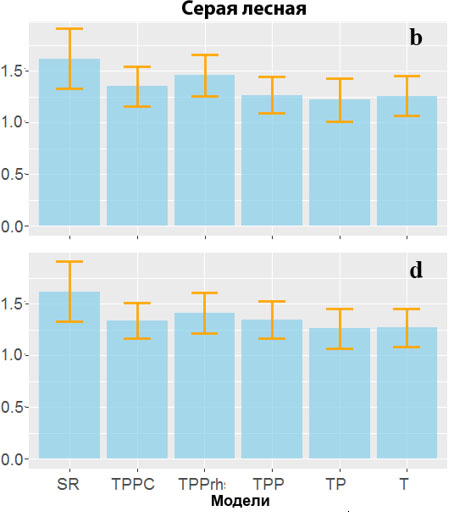Application of the ensemble of T&P models for estimating the respiration of forest soils in the zone of temperate continental climate
DOI:
https://doi.org/10.31251/pos.v7i2.252Keywords:
modeling of soil respiration; Entic Podzol; Haplic Luvisol; forest ecosystems; ensemble of empirical models.Abstract
The aim of the study was by using an ensemble of T&P models, i.e. empirical models of soil respiration dependent on temperature, precipitation and other meteorological and soil parameters, to show the dependence of the choice of optimal empirical models of soil respiration on the soil types in forest ecosystems, in this case Entic Podzol and Haplic Luvisol, as well as on options for parameterizing models using soil or air temperatures, precipitation and soil organic carbon stock.
Location and time of the study. Temperate continental climate zone of the Central Russia: mixed forest in the north shore of Oka River and deciduous forest on the south shore of Oka River. The data were collected in 1998–2022.
Methods. An ensemble of empirical models of soil respiration was used, linking soil respiration to monthly mean soil or air temperatures and precipitation and soil organic carbon stock. At the same time, a method for determining soil respiration at zero degrees was proposed based on the results of a comparative analysis of simulated data with field measurements.
Results. For the forest Entic Podzol, i.e. the well-drained soil poor in organic carbon, the model that relates soil respiration to soil temperature, precipitation and organic carbon storage was the best, whereas for Haplic Luvisol, i.e. the soil with good water retention capacity, the Reich-Hashtmoto model with a quadratic dependence on temperature at an exponent point was the best model.
Conclusions. When choosing optimal empirical models of soil respiration, it is important to take into account such soil parameters as organic carbon stock and the ability to retain water.
Downloads

Downloads
Published
How to Cite
Issue
Section
License
Copyright (c) 2024 The Journal of Soils and Environment

This work is licensed under a Creative Commons Attribution 4.0 International License.






